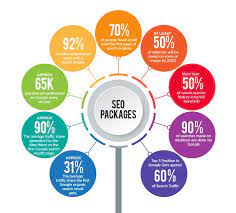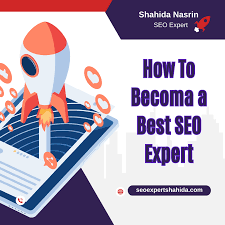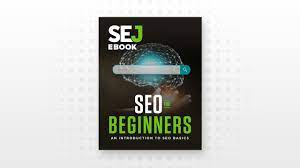The Power of Paid Search Optimization
In today’s digital age, paid search optimization has become a vital component of any successful online marketing strategy. With the increasing competition in the digital space, businesses are constantly looking for ways to stand out and attract more customers. Paid search optimization, also known as pay-per-click (PPC) advertising, offers a highly effective way to reach your target audience and drive valuable traffic to your website.
What is Paid Search Optimization?
Paid search optimization involves creating and managing online advertising campaigns that appear in search engine results when users search for specific keywords related to your business. These ads are displayed prominently at the top of search engine results pages, making them highly visible to potential customers.
The Benefits of Paid Search Optimization
There are several key benefits to investing in paid search optimization:
- Increased Visibility: By appearing at the top of search engine results pages, your ads can significantly increase your brand’s visibility and reach a wider audience.
- Targeted Advertising: Paid search optimization allows you to target specific keywords and demographics, ensuring that your ads are shown to users who are most likely to be interested in your products or services.
- Measurable Results: With paid search optimization, you can track and measure the performance of your ads in real-time, allowing you to make data-driven decisions to optimize your campaigns for better results.
- Cost-Effective Marketing: Unlike traditional advertising methods, paid search optimization allows you to set a budget for your campaigns and only pay when users click on your ads, making it a cost-effective way to reach potential customers.
Tips for Successful Paid Search Optimization
To make the most of your paid search optimization efforts, consider the following tips:
- Keyword Research: Conduct thorough keyword research to identify relevant keywords that align with your business goals and target audience.
- Compelling Ad Copy: Create engaging ad copy that clearly communicates the value proposition of your products or services and encourages users to click on your ads.
- Landing Page Optimization: Ensure that your landing pages are optimized for conversions by providing relevant content and a clear call-to-action for visitors.
- A/B Testing: Test different ad creatives, landing page designs, and call-to-action buttons to identify what resonates best with your target audience.
In Conclusion
Paid search optimization is a powerful tool that can help businesses drive targeted traffic, increase brand awareness, and generate valuable leads. By implementing a well-planned paid search strategy and continuously optimizing your campaigns based on data insights, you can achieve significant results and grow your online presence effectively.
Maximize Your Marketing: 6 Key Benefits of Paid Search Optimization
- Increased brand visibility
- Targeted advertising to reach specific audiences
- Measurable results for tracking performance
- Cost-effective marketing with control over budget
- Immediate impact on website traffic and leads
- Ability to adjust campaigns in real-time for optimization
5 Drawbacks of Paid Search Optimization: Costs, Click Fraud, and More
Increased brand visibility
One significant advantage of paid search optimization is the increased brand visibility it offers. By appearing at the top of search engine results pages, businesses can enhance their online presence and reach a broader audience. This heightened visibility not only helps in attracting more potential customers but also reinforces brand recognition and credibility among users searching for related products or services. Ultimately, increased brand visibility through paid search optimization can lead to improved brand awareness, customer engagement, and ultimately, business growth.
Targeted advertising to reach specific audiences
One of the key advantages of paid search optimization is the ability to engage in targeted advertising to reach specific audiences. By identifying and selecting relevant keywords, demographics, and interests, businesses can tailor their ads to appear in front of users who are most likely to be interested in their products or services. This targeted approach not only increases the likelihood of attracting potential customers but also maximizes the effectiveness of marketing efforts by focusing on reaching individuals who are more likely to convert and engage with the brand.
Measurable results for tracking performance
One significant advantage of paid search optimization is the ability to track performance and measure results effectively. By utilizing analytics tools and tracking mechanisms, businesses can gain valuable insights into the performance of their advertising campaigns in real-time. This data allows for a clear understanding of what strategies are working well and where adjustments may be needed to improve outcomes. With measurable results, businesses can make informed decisions to optimize their paid search campaigns for better performance, ultimately leading to more efficient use of resources and improved return on investment.
Cost-effective marketing with control over budget
One of the key advantages of paid search optimization is its cost-effective nature, providing businesses with precise control over their advertising budget. Unlike traditional marketing methods that may require a substantial upfront investment with uncertain returns, paid search optimization allows companies to set specific budgets for their campaigns and only pay when users click on their ads. This level of control ensures that businesses can allocate their resources efficiently and maximize the impact of their marketing efforts, making paid search optimization a highly attractive option for businesses looking to achieve measurable results within a defined budget.
Immediate impact on website traffic and leads
Paid search optimization offers businesses the advantage of immediate impact on website traffic and leads. By strategically placing ads at the top of search engine results pages, businesses can instantly attract relevant traffic to their websites, increasing visibility and generating valuable leads. This quick and targeted approach allows businesses to see tangible results in a short amount of time, making paid search optimization an effective tool for driving immediate growth and achieving marketing objectives.
Ability to adjust campaigns in real-time for optimization
One significant advantage of paid search optimization is the ability to adjust campaigns in real-time for optimization. This flexibility allows businesses to make immediate changes to their ads, keywords, and targeting based on real-time data and performance metrics. By analyzing campaign results as they unfold, businesses can quickly identify what is working well and what needs improvement, enabling them to optimize their campaigns for better results efficiently. This real-time adjustment capability ensures that businesses can stay agile and responsive in the ever-evolving digital landscape, ultimately maximizing the effectiveness of their paid search efforts.
Costly
Paid search optimization can be a costly endeavor, particularly when targeting competitive keywords that command high bids. This expense can quickly add up, making it challenging for small businesses operating on limited budgets to sustain long-term paid search campaigns. The financial burden of investing in paid search optimization may outweigh the potential benefits for smaller enterprises, leading them to explore more cost-effective marketing strategies to achieve their online visibility and customer acquisition goals.
Click Fraud
One significant drawback of paid search optimization is the risk of click fraud. Click fraud occurs when competitors or malicious users intentionally click on your ads multiple times, depleting your advertising budget without any genuine interest in your products or services. This unethical practice can skew campaign data, waste resources, and hinder the effectiveness of your paid search efforts by inflating click numbers without generating valuable leads or conversions. Advertisers must remain vigilant and implement measures to detect and prevent click fraud to ensure that their advertising budget is utilized effectively and reaches the intended target audience.
Limited Long-Term Benefits
A significant drawback of paid search optimization is its limited long-term benefits when compared to organic search strategies like SEO. While paid search can deliver immediate results and drive traffic to your website, the effects are often short-lived and may diminish once the advertising budget is exhausted. In contrast, organic search strategies, such as SEO, focus on building a strong online presence over time, resulting in sustainable visibility and traffic growth that can continue to benefit your business in the long run.
Dependency on Platforms
Businesses that heavily depend on paid search optimization face a significant drawback in the form of platform dependency. Relying solely on search engine algorithms and policies means that any changes implemented by the platform can have a direct impact on the performance and visibility of ads. This vulnerability can lead to sudden fluctuations in ad effectiveness, making it challenging for businesses to maintain consistent results and ROI from their paid search campaigns. It underscores the importance of diversifying marketing strategies to mitigate the risks associated with being at the mercy of external platform factors.
Ad Blindness
As online users become more savvy and discerning, they are developing a phenomenon known as ad blindness, where they can easily identify and disregard paid advertisements within search results. This trend poses a significant challenge for businesses relying on paid search optimization, as the effectiveness of their campaigns diminishes over time with users actively ignoring these ads. Ad blindness highlights the importance of creating compelling and relevant content that resonates with target audiences to combat this growing issue in the digital advertising landscape.




